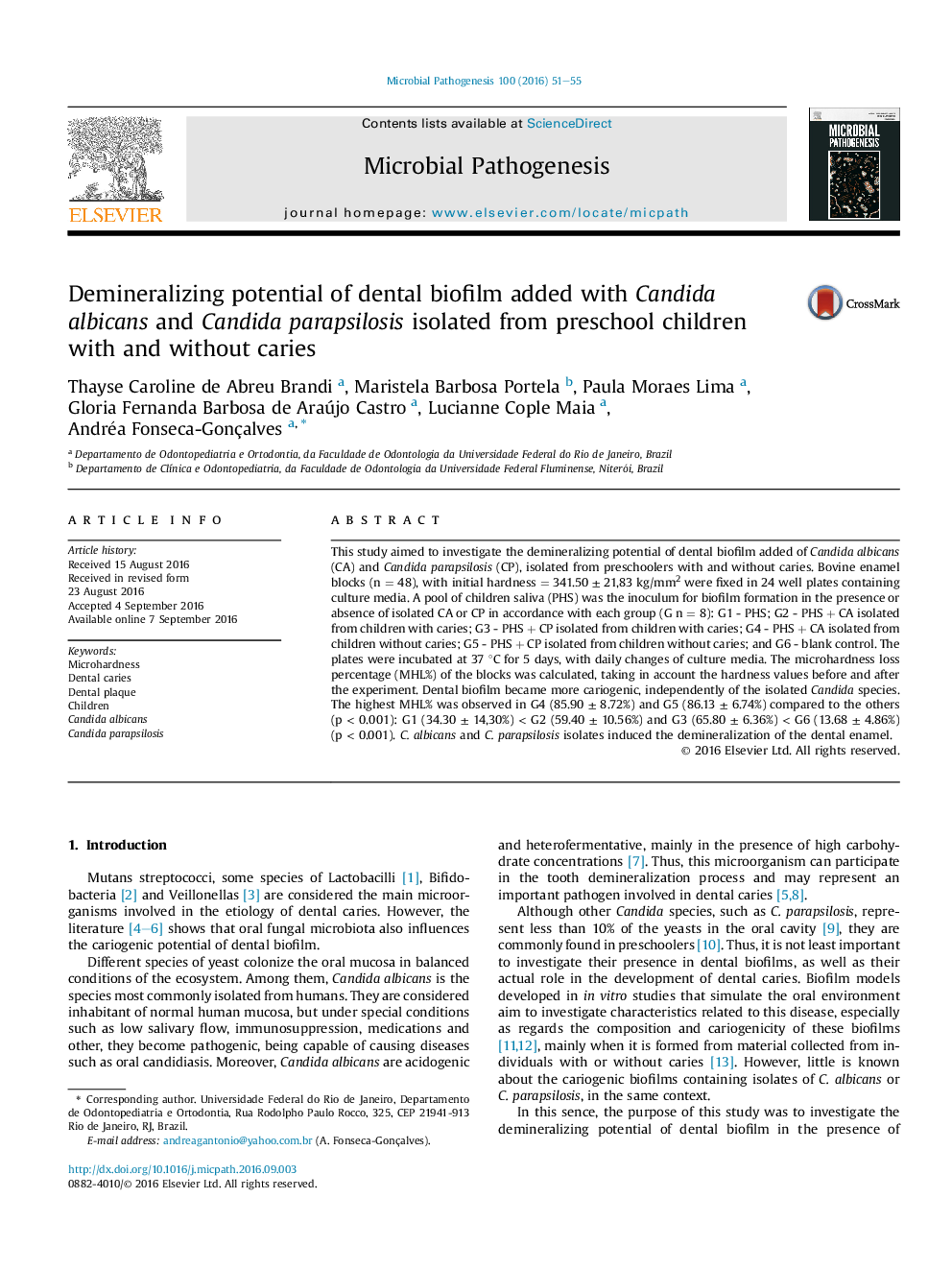| Article ID | Journal | Published Year | Pages | File Type |
|---|---|---|---|---|
| 3416202 | Microbial Pathogenesis | 2016 | 5 Pages |
•Isolates of Candida albicans and Candida parapsilosis increase the cariogenicity of dental biofilm.•Caries experience of children negatively influenced the behavior of C. albicans and C. parapsilosis in an in vitro biofilm.•C. albicans and C. parapsilosis isolates induced the demineralization of the dental enamel.
This study aimed to investigate the demineralizing potential of dental biofilm added of Candida albicans (CA) and Candida parapsilosis (CP), isolated from preschoolers with and without caries. Bovine enamel blocks (n = 48), with initial hardness = 341.50 ± 21,83 kg/mm2 were fixed in 24 well plates containing culture media. A pool of children saliva (PHS) was the inoculum for biofilm formation in the presence or absence of isolated CA or CP in accordance with each group (G n = 8): G1 - PHS; G2 - PHS + CA isolated from children with caries; G3 - PHS + CP isolated from children with caries; G4 - PHS + CA isolated from children without caries; G5 - PHS + CP isolated from children without caries; and G6 - blank control. The plates were incubated at 37 °C for 5 days, with daily changes of culture media. The microhardness loss percentage (MHL%) of the blocks was calculated, taking in account the hardness values before and after the experiment. Dental biofilm became more cariogenic, independently of the isolated Candida species. The highest MHL% was observed in G4 (85.90 ± 8.72%) and G5 (86.13 ± 6.74%) compared to the others (p < 0.001): G1 (34.30 ± 14,30%) < G2 (59.40 ± 10.56%) and G3 (65.80 ± 6.36%) < G6 (13.68 ± 4.86%) (p < 0.001). C. albicans and C. parapsilosis isolates induced the demineralization of the dental enamel.
